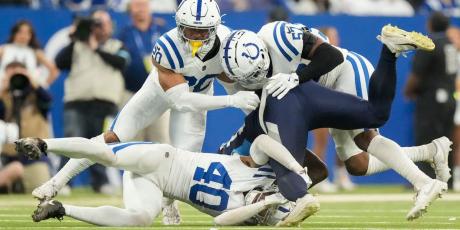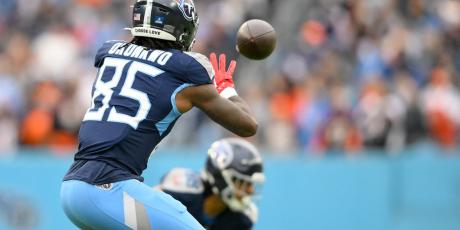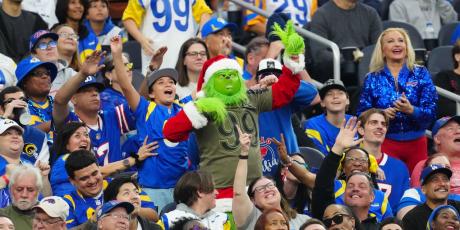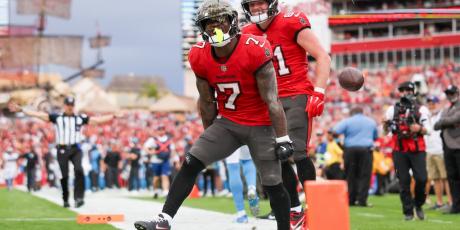Quarterbacks: The Replaceability is Real.

There exists an intractable psychological barrier for many fantasy footballers: Quarterbacks are important, quarterbacks get shoe deals and become the face of the franchise and win Super Bowls. Quarterbacks are unflinching field generals.
Therefore I need to invest heavily in a quarterback for my fantasy football team. I need that elite signal caller.
It’s that mindset that creates massive inefficiencies in fantasy football’s quarterback market. With every passing season, as teams throw the ball more and quarterbacks become more and more replaceable, the inefficiency grows.
That inefficiency reached epic levels during the 2013 season, as we’ll see below. Hence, our quarterback by waiver wire (QBBWW) strategy was more viable – more sensible, really – last year than ever before.
I think there’s another, slightly less common, psychological barrier preventing fantasy owners from fully exploiting the quarterback market’s glaring holes. We so badly want quarterback to be like other fantasy positions.
We want to set it and forget it, just as we often (rightfully) do with top-end running backs and wide receivers drafted in the first few rounds of a draft. That wish – that our quarterback is our quarterback, come hell, high water, or horrid matchups – is an insidious one. It sinks a million fantasy squads every fall.
There’s also the shared experience of chasing points on the waiver wire – a questionable pursuit that involves un-owned quarterbacks more than any other position besides kicker and defense. The experience of chasing those points, plugging in your new waiver wire treasure, and watching him fall on his statistical face the following week is enough to put anyone off the QBBWW strategy.
That’s not really the strategy though, is it? QBBWW is based on matchups, and while that sometimes necessitates chasing points on the wire, it usually means exploiting favorable matchups that your competitors ignore because, well, they have their quarterback and there’s no way they’d ever bench their guy.
This is the future. We have the tools to pinpoint the most favorable matchups week in and week out, and many of those juicy matchups fall into the hands of signal callers floating around the fantasy purgatory of your local waiver wire.
Below is a chart showing the number of startable options we had at quarterback in 2012 & 2013. A startable option, for the uninitiated, is any signal caller who finishes among the 12 highest scoring quarterback options in a given week.
Startable QBs, 2012-13
|
QB Startable Weeks |
2012 |
2013 |
|
1 or more startable weeks |
38 |
45 |
|
2 or more startable weeks |
30 |
37 |
|
3 or more startable weeks |
28 |
30 |
|
4 or more startable weeks |
26 |
23 |
|
5 or more startable weeks |
20 |
20 |
|
6 or more startable weeks |
17 |
15 |
|
7 or more startable weeks |
14 |
11 |
|
8 or more startable weeks |
10 |
8 |
|
9 or more startable weeks |
8 |
5 |
|
10 or more startable weeks |
5 |
3 |
We shouldn’t ever expect the bottom of this chart to change all that much, seeing that elite quarterbacks will always post two fistfuls of startable weeks. That’s not the point though, for our purposes.
It’s the top of the chart that should grab our attention. The number of quarterbacks who posted top-12 finishes once, twice, and thrice increased from 2012 to 2013 – the best possible news for anyone who treats the quarterback position as replaceable in 10 and 12-team fantasy leagues.
There was a drop in quarterbacks who notched top-12 weekly totals six, seven, eight, nine, and 10 times from 2012 to 2013. That’s nothing more than trivia for us though, since QBBWW will rarely have us started the same signal caller in half of a season’s games.
Comparing top-12 weekly finishes with the year’s total quarterback scoring shows that even signal callers who appeared to be fantasy studs were fairly – sometimes very – unreliable in 2013.
Andy Dalton, who somehow finished the season as the fourth highest scoring quarterback, had just one more top-12 finish than Ryan Tannehill, who was 2013’s No. 15 fantasy quarterback. Andrew Luck, fantasy’s No. 7 quarterback, had precisely two more top-12 weeks than Nick Foles, who started four fewer games than luck (and was on the waiver wire until October).
The 2012 startable quarterback numbers were startling a couple years back. I would’ve thought it hard to believe, at best, that startable options would grow in 2013. They did, and not insignificantly.
Unless you’re in a very deep league – 14 teams or more – this is more good news for anyone who has embraced the QBBWW strategy. Sometimes you’ll stumble upon weekly starters, like Foles in 2013. At worst, QBBWW will allow you to take full advantage of your league mates’ stubbornness and unwillingness to separate fantasy from reality football.
It’s a critical distinction.






















